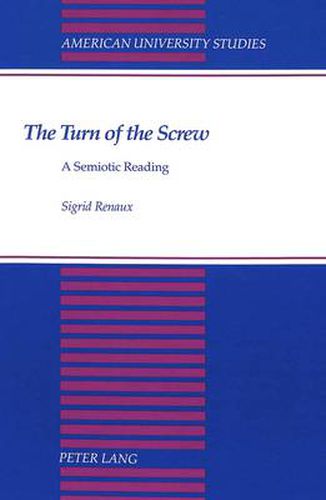Readings Newsletter
Become a Readings Member to make your shopping experience even easier.
Sign in or sign up for free!
You’re not far away from qualifying for FREE standard shipping within Australia
You’ve qualified for FREE standard shipping within Australia
The cart is loading…






One of the greatest critical challenges of the 20th century, from its publication in 1898 up to our own time, The Turn of the Screw continues to fascinate readers and scholars alike, by its seemingly inexhaustible semantic richness. This study presents a re-evaluation of the ambiguities and doubts which permeate Henry James’s tale, through a process of semiotic transcodification. By way of C.S. Peirce’s and D. Pignatari’s theories of the sign, it captures and interprets the iconic-symbolic elements interwoven in the narrative, thus offering astonishing new insights into the question of the reality / unreality of the apparitions, the coexistence or not of good and evil in the children, and the credibility of the governess / narrator, among other aspects. By integrating all of them into a semantic structure, it demonstrates how the interpretation of the tale gyrates around the fusion of contradictions, as the turn of the screw synthetizes universal duality / complementarity.
$9.00 standard shipping within Australia
FREE standard shipping within Australia for orders over $100.00
Express & International shipping calculated at checkout
One of the greatest critical challenges of the 20th century, from its publication in 1898 up to our own time, The Turn of the Screw continues to fascinate readers and scholars alike, by its seemingly inexhaustible semantic richness. This study presents a re-evaluation of the ambiguities and doubts which permeate Henry James’s tale, through a process of semiotic transcodification. By way of C.S. Peirce’s and D. Pignatari’s theories of the sign, it captures and interprets the iconic-symbolic elements interwoven in the narrative, thus offering astonishing new insights into the question of the reality / unreality of the apparitions, the coexistence or not of good and evil in the children, and the credibility of the governess / narrator, among other aspects. By integrating all of them into a semantic structure, it demonstrates how the interpretation of the tale gyrates around the fusion of contradictions, as the turn of the screw synthetizes universal duality / complementarity.